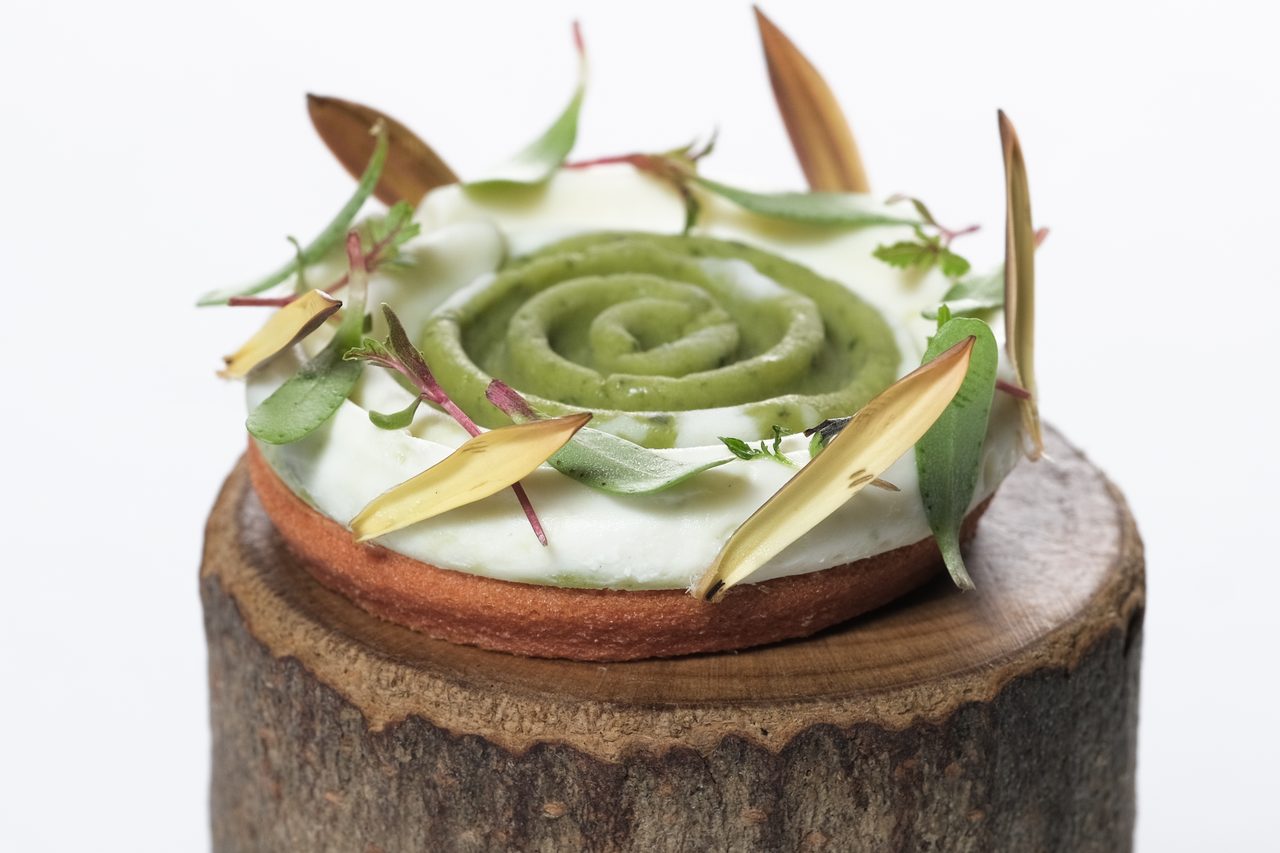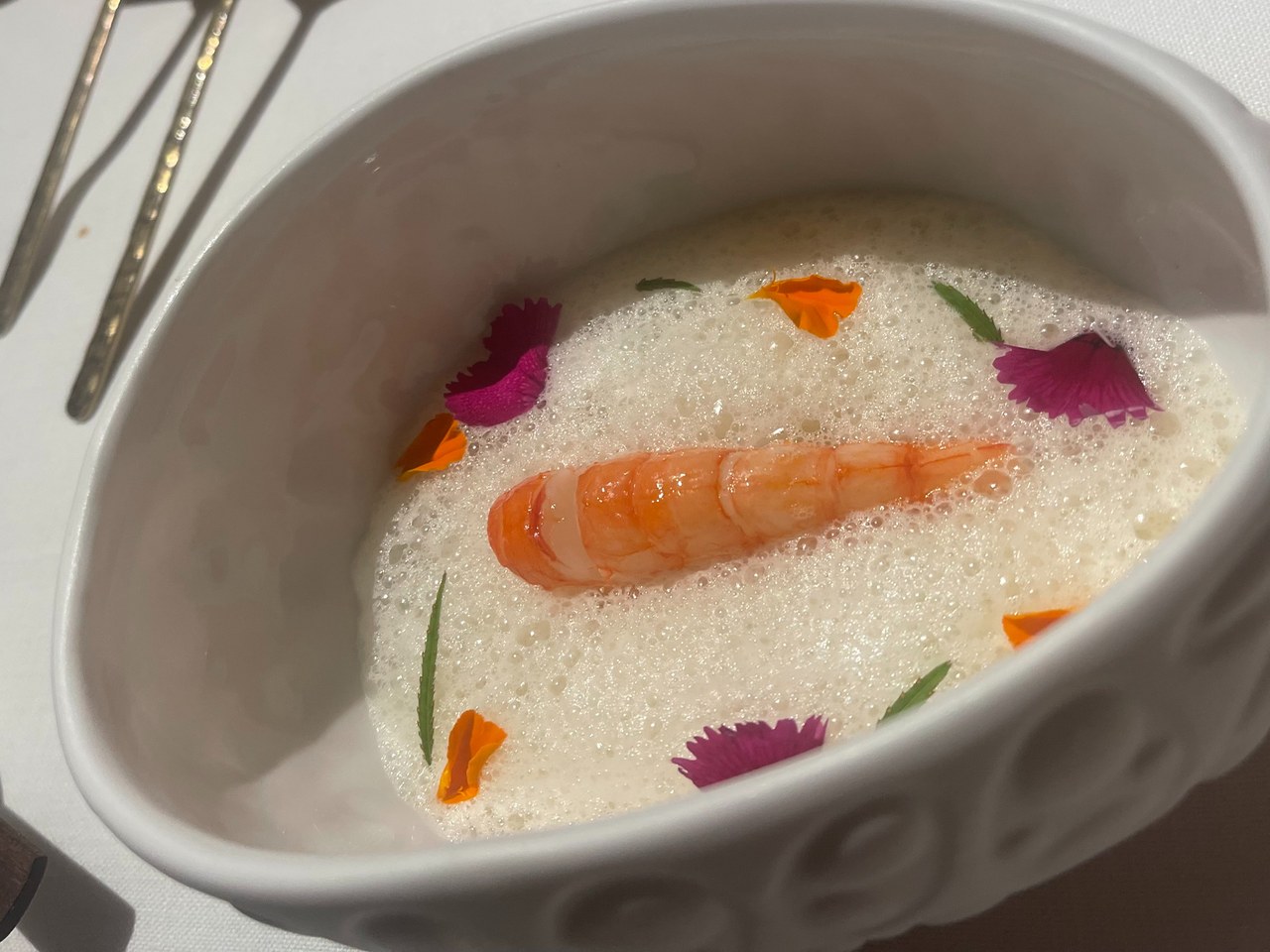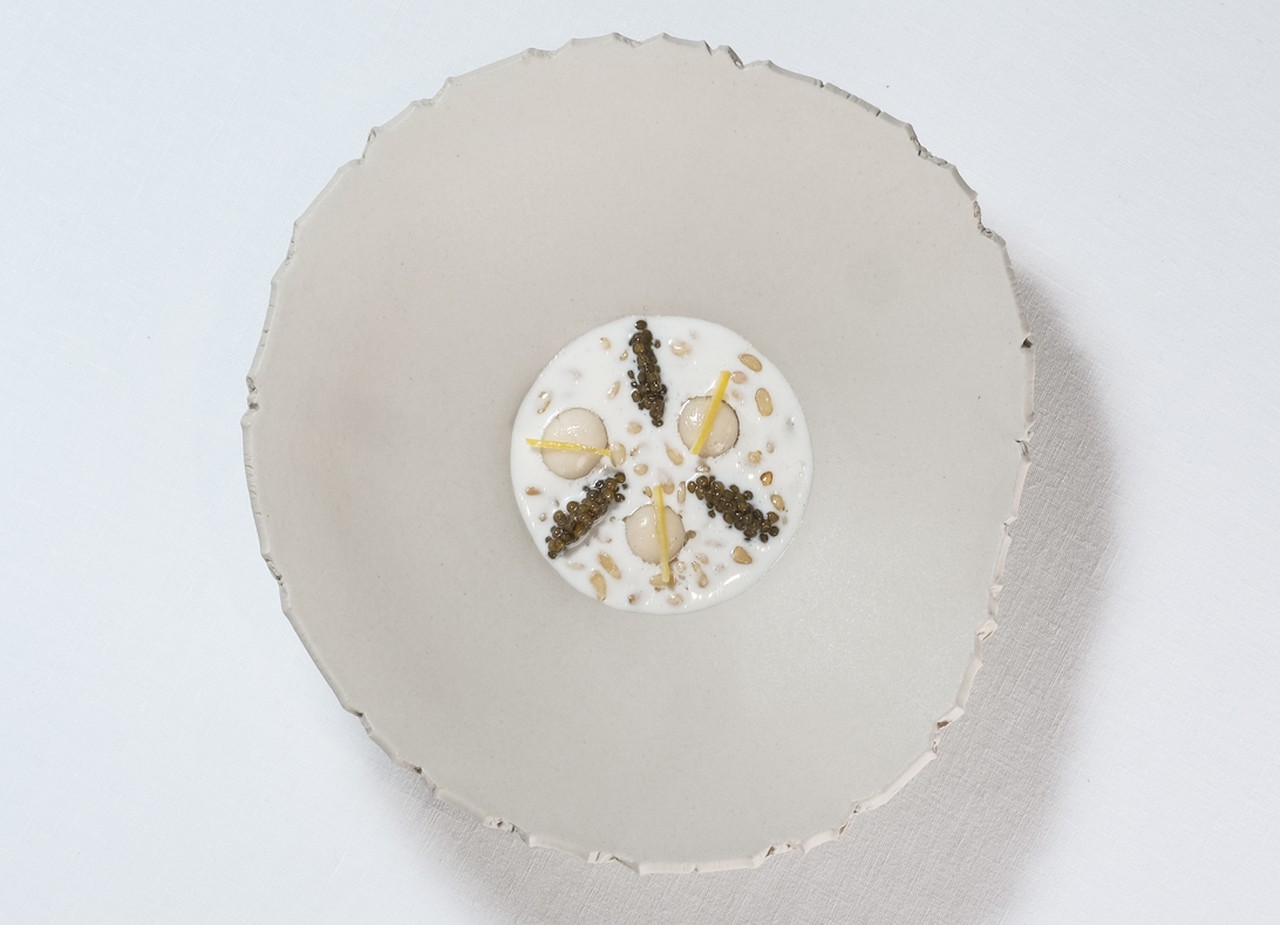La Salita restaurant in Ruzafa, Valencia is a wondrous garden of creative, enchanting delight. The name, Ruzafa, means ‘garden’ in Arabic. It dates from the 9th century when Valencia was known as Balansiya and ruled by Abd Allah al-Balansi who decreed that a large green recreational space should be constructed outside of the city.
One of its outstanding landmarks is Begoña Rodrigo’s astonishing temple to epicurean pleasure, the Michelin-starred La Salita, the Spanish word for “the salon”. La Salita is a delightful slap in the face for those who assert that paella is the only show in town.
About Begoña Rodrigo

Chef Begona with seasonal locally grown produce
Begoña Rodrigo is, like her produce, locally grown – born in Valencia in 1975. Her quest for adventure saw her move to Amsterdam at just 20, where she worked as a kitchen assistant at that city’s Marriott Hotel.
After a year, Begoña she went to London for another stage of training at the French-style Aquarium, a private members’ club with two Michelin stars.
Begoña returned to Spain, first to Reus and then home to Valencia. She joined the team at La Sucursal, the fine-dining vision atop Veles E Vents, the former marina constructed for the Americas’ World Cup. She spent eight years there, finessing her art and skill before deciding with her then-partner, Jorne Buurmeijer, to launch La Salita.
She became a household name when she won the Spanish TV chef show Top Chef.
The Ambience
La Salita is in a square 19th-century building in the colonial style, two stories with a cupola perched atop. A sturdy wooden gate in the brick wall gives way to a charming patio garden with tall palm trees whose fronds sway in the breeze. We arrive at 8pm. Sergio leads us to our table downstairs beside a long cocktail bar that brings a hint of beachside Cuba.
Food & Drink
First, the serious business of arranging our cocktails. I opt for the Magreb Sour, a pisco sour infused with Ras El Hanout lending a taste of Morocco, white tea and yuzu. This is an Asian citric plant that has a taste like lemon, but on steroids. It’s finished with a parmesan bitter.

Salita starters
We receive our first round of dishes from the Sangonereta menu (€175,70 per person, wine charged separately). These are beautifully presented on homemade wooden stands that look like bonsai tree trunks. It is the first introduction to the amazing and explosive riot of tastes that are the hallmark of the evening.
The selection of small plates includes croquettes with a fesols i naps broth – a reductive play upon a typical Valencian stew that is the consummate autumnal dish.
The broth is made of turnip cabbage, thistle and white beans cooked long enough that the broth contains all the flavours, perfectly confected. Brought in a small iron pot, two croquettes are balanced on top, providing a great crunchy and punchy counterpoint to the heady broth. The croquettes are made of home-cooked beef and pork in a creamy bechamel sauce. Wonderful.
Next, a delicious crispy maki, cauliflower and squid dish with a picante mojo sauce. This is typically associated with the Canaries, and is made up of bell peppers, garlic and chilli peppers. A triumph.
The spicy tonyina nigiri is an interpretation of a tuna nigiri or sashimi that is both fresh and with a little contrasting spice. And by way of contrast, a fishy sardine that has been through the slimer, making it a crispy clear blue fish fossil with confited leeks and potatoes, making it a riot of flavour.
My favourite was the oyster salad, presented as a small open tart filled with a foam of the mollusc that was simply divine. Finally, we had a deer tartar wrapped in a shiso leaf (think a Valencian dolmade) with a tofu mayonnaise. All exquisitely presented, all perfectly formed.
After this, we were led upstairs to the main dining room. This is a large large room divided into alcoves and dining areas. The ceiling is made up of living citric plants that attest to Begoña’s love of seasonal, local vegetables. She has been voted Spain’s greatest chef for vegetables, and the second greatest in the world.
We were waited upon hand and foot by Alex, a young Canadian waiter, with Ana and Lucia impeccably turned out in black trousers and collarless tunics.
The opening salvo was a cold soup of tiger nuts and razor shells. Ludicrously tasty. The combination of seafood and tiger nuts is a Valencian twist. Seafood for obvious reasons, and tiger nuts are special to the region. Grown in La Huerta, the huge allotments that surround the city, well known as the basis for horchata, a kind of vegetarian batido or milkshake beloved locally.
Served alongside homemade focaccia bread and with lagrima olive oil from the Sierra Caldona west of Castellón in the north of the Comunidad Valenciana. That the bread was perfect was no surprise but the olive oil was incredible. Powerful and punchy, it was fruity and spicy, if that is not a contradiction. This dish was paired with a Las Travinas white wine from the merseguera grape typical of the Utiel-Requena region just west of Valencia city. Good acidity, and a hint of bitter almonds and herbs.
This was followed up by a dish they call ‘The Queen’. It’s a broth made from shrimp heads with ginger, and a refreshing cucumber base. It came with a whole shrimp from Denia.

The Queen – Shrimp broth
Alex explained that the shrimp is dipped in hot water “for only 30 seconds” to retain that sweet, fresh flavour. This came paired with a Casa Julia, a flinty and mineral albariño, making a perfect duet.
Next up was an eel sausage stew that had a powerful, meaty taste. This was akin to a creamy haddock risotto, La Salita’s tribute to the local Valencia eel stew, normally eel and potato. It had a superb crunchy base known as soccorat, the burnt rice at the bottom of the dish of any paella worth its salt. Its force was underlined by its wine accompaniment of Cambio de Tercio, a fruity bobal, again from Utiel-Requena. It had an intense cherry flavour with a hint of lavender.
Since Begoña has been feted by the vegetarian world as well as by Michelin and Repsol, the next dish was meat-free, despite being called “Charcuterie”. Expect marinated turnip cane, smoked-radish watermelon pastrami with a pumpkin sobrasada and a wonderfully autumnal mushroom and chestnut pâté.
This was followed by another exquisite “Tot de poble”, a Valencian artisanal cheese, a dish with parsnip and fermented cabbage cream, served with a Sinto Centella Cabernet Franc and Marselan. Incredibly moreish.
This wine worked well with our final savoury dish, a quail breast in a broth with a leg of quail on the side that had been marinated in a sweet and sticky sauce.
Our postre was a Mexican taco, a fun dish with the appearance of a taco who cantilevered span sides were made of a kind of biscuit stuffed with a bubble-like sauce made of Hoya de la Iglesia, a goat cheese derivative, here with fig cream, sauteed figs and a Tintoralba garnacha wine. For me, it was the taste of childhood, it was a happy and fun dish.
All that was left was to sample one of their exquisite homemade chocolates that came in a wooden box with individual drawers, and a complimentary cognac on the house.
VERDICT: We had spent four hours in this temple to epicureanism and left with the wooden gate clicking behind us, happy, fulfilled and full of resolve to return.
La Sangonereta menu, € 75,70per person, booking essential; La Salita, Carrer de Pere III el Gran, 11, Ruzafa, 46005 Valencia; +34 609 33 07 60
Source : https://www.thetravelmagazine.net/la-salita-restaurant-review-michelin-starred-cuisine-in-valencia-spain/


